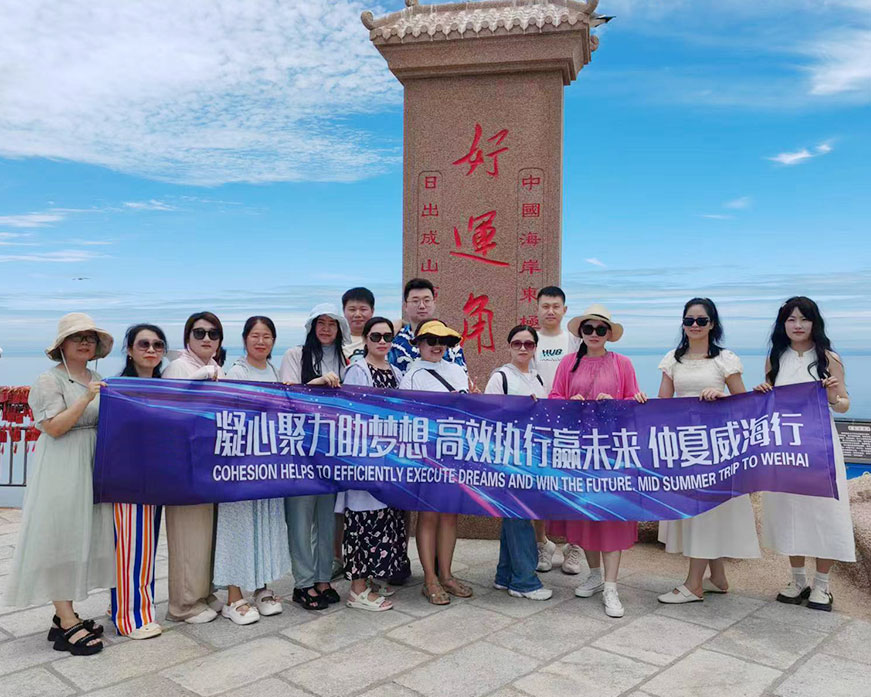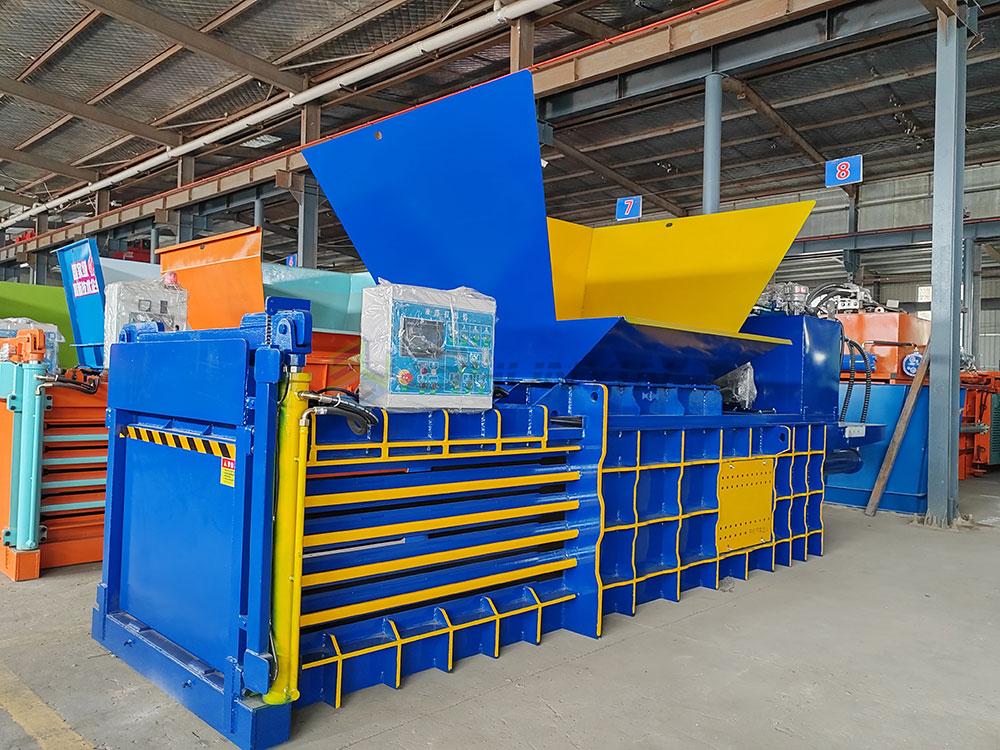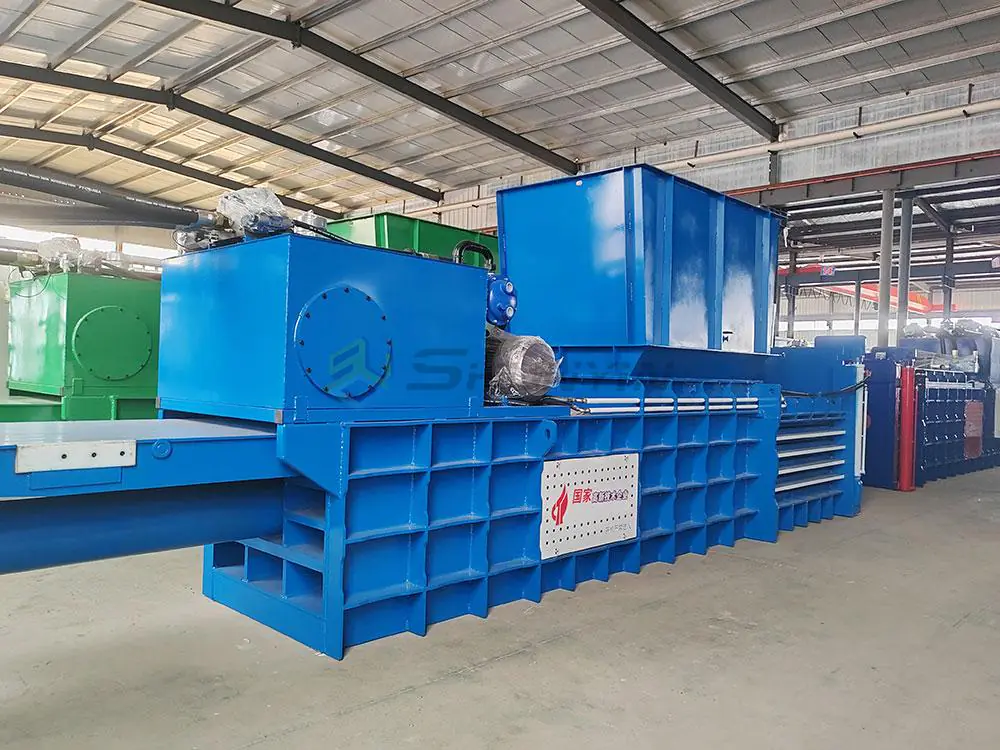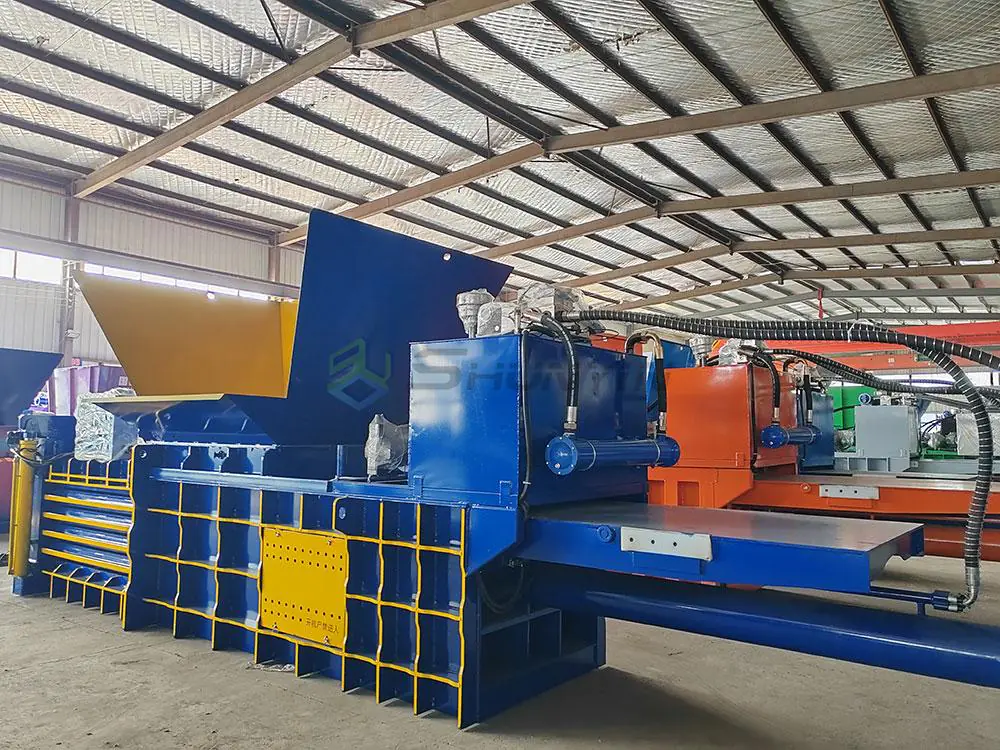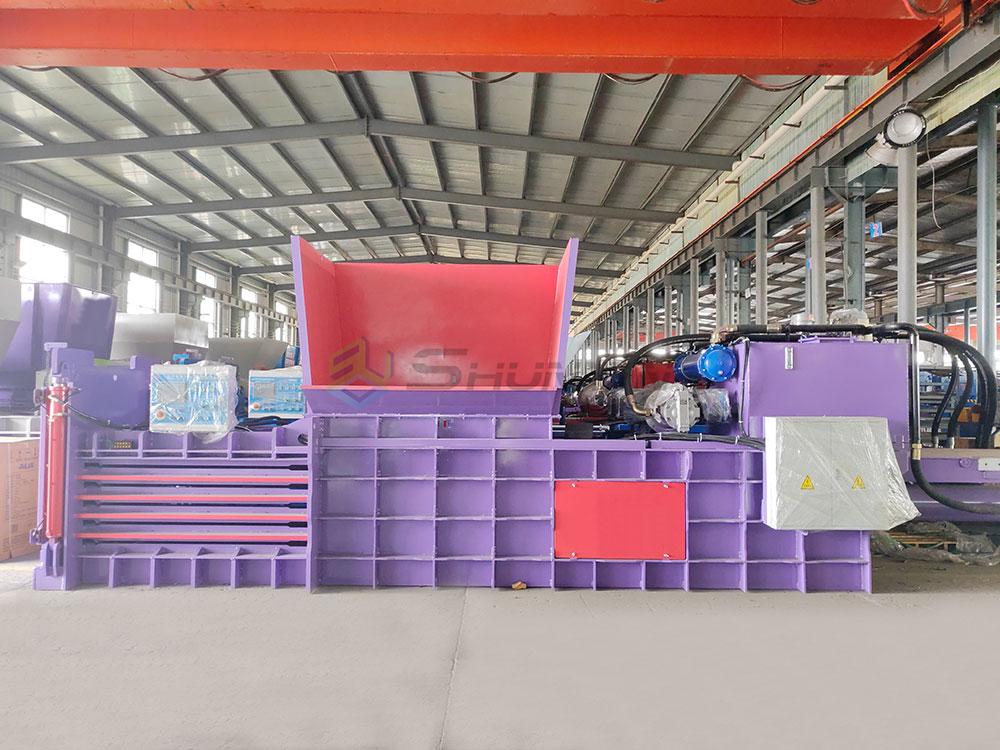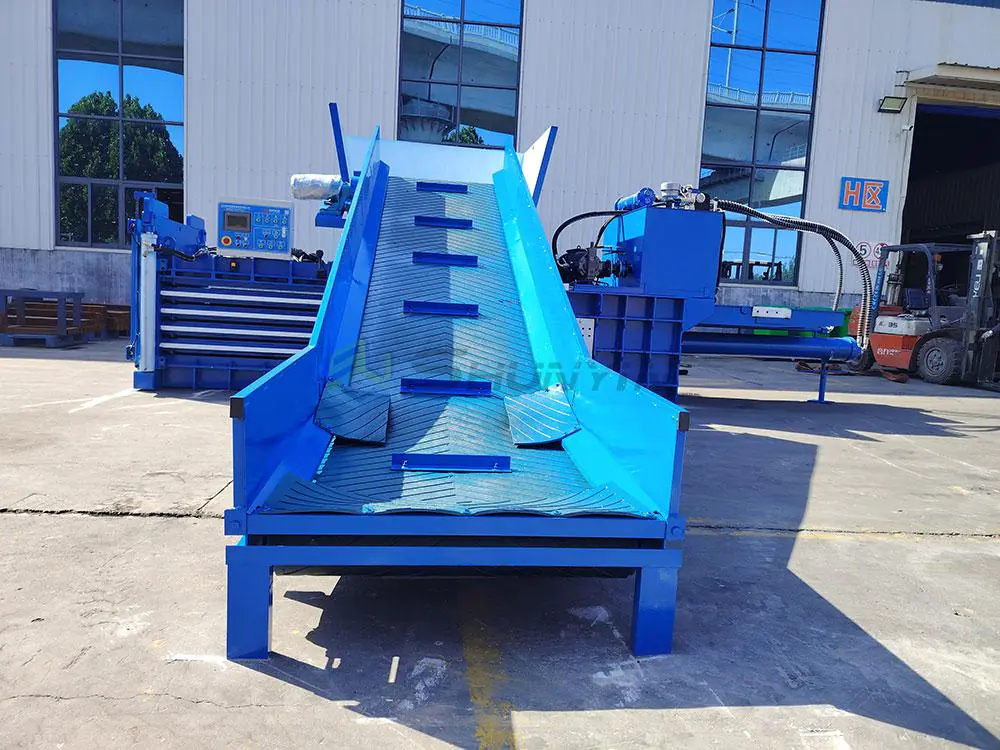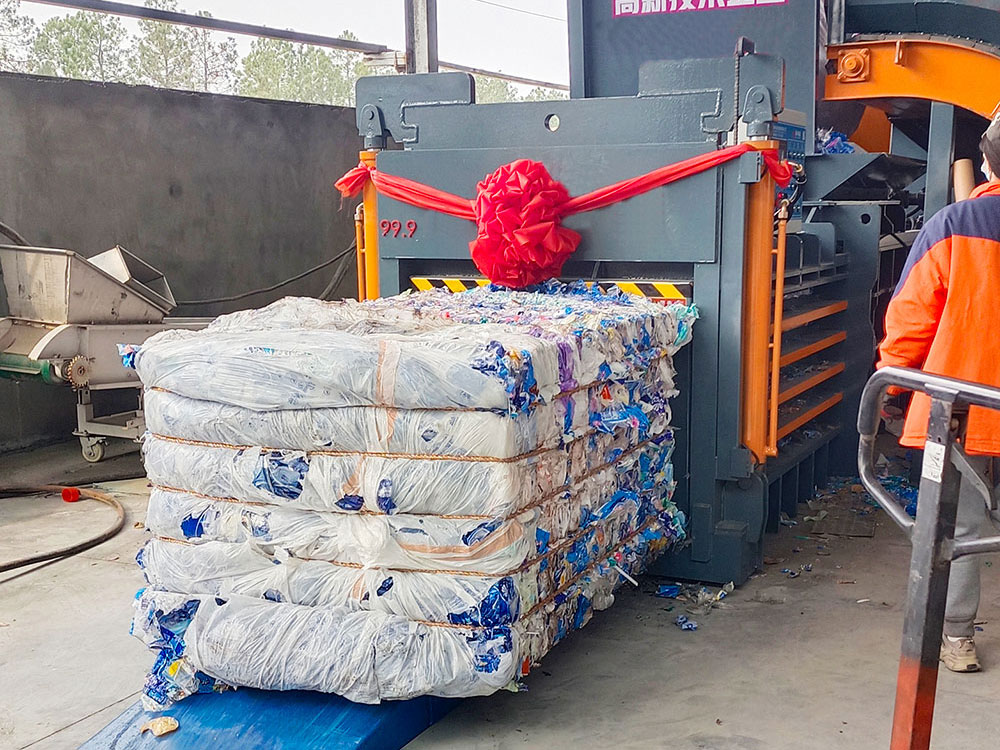
Taipei’s plastic recyclers increased container load efficiency by 127% using HS-2800 auto balers – reducing warehouse footprint from 3,200m² to 780m² while maintaining 99.2% material purity under ISO 14065 standards.
Auto hydraulic horizontal balers cut plastic waste storage costs by 38-41% through intelligent compaction cycles. The BalerMaster Pro achieves 820kN adaptive pressure with 0.03kWh/kg energy efficiency – critical as global resin prices fluctuate 22% monthly.
Discover how advanced compression technology transforms waste streams.
What Is Baler in Waste Management?
Beyond basic compaction solutions
Waste Stream Optimization Metrics
| Parameter | Manual Processing | Auto Baling Press | Improvement |
|---|---|---|---|
| Material Loss | 14% | 0.7% | 95% ↓ |
| Processing Cost/ton | $167 | $82 | 51% ↓ |
| Safety Incidents | 3.7/week | 0.2/week | 95% ↓ |

Modern Baling Innovations
Tokyo Facility Case (2024):
- Automated oil mist filtration (0.4mg/m³ compliance)
- AI-driven contaminant detection <2mm fragments
- Blockchain-enabled material traceability
Operational Impact:
- Achieved JIS Z 2801:2022 certification
- Qualified for Japanese METI’s 19% tax rebate
- Reduced insurance premiums by 34%
What Is the Machine Used to Reduce the Size of Waste Material?
Engineering efficient volume reduction
Technical Comparison Matrix
| System | Shredder Only | Auto Baler Combo | Density Gain |
|---|---|---|---|
| Final Volume | 33% original | 12% original | 275% ↑ |
| Energy Consumption | 48kWh/ton | 19kWh/ton | 60% ↓ |
| Floor Space | 9m²/ton capacity | 3m²/ton capacity | 67% ↓ |

Critical System Components
- Variable pressure chambers (250-900kN range)
- Multi-layer compression plates (7-stage cycling)
- Thermal control jackets (0-150°C regulation)
| Shenzhen Recycling Hub Data: | Material | Loose Storage Cost | Baled Storage Cost | Savings |
|---|---|---|---|---|
| PET Flakes | ¥380/m³/month | ¥125/m³/month | 67% ↓ | |
| HDPE Lumps | ¥420/m³/month | ¥141/m³/month | 66% ↓ |
What Is the Process of Plastic Baling?
From waste stream to transport-ready
6-Stage Smart Baling Workflow
-
Smart Grading
- Infrared spectroscopy material identification
- Auto-rejects PVC content >0.3%
-
Moisture Regulation
- Dehumidifies to ≤2% humidity
- Prevents mold growth during sea transit

- Quality Verification
| Checkpoint | Manual Method | Auto System |
|---|---|---|
| Bale Density | ±18% variance | ±0.4% variance |
| Metal Contamination | >5mm detection | >0.6mm detection |
| Bundle Size | 85% compliance rate | 99.8% compliance rate |
Rotterdam Port Requirements:
- EU Waste Shipment Annex VII certification
- RFID tracking with GPS coordinates
- ≤0.1% oil leakage guarantee
What Is the Purpose of a Baling Machine?
Creating circular economy value
ROI Calculation Model
| Factor | Without Baling | With Baling |
|---|---|---|
| Transport Costs | $28k/month | $9k/month |
| Warehouse Rent | $45k/month | $15k/month |
| Material Premium | 0% | +17-22% |
| Annual Profit Impact | ($876k) | +$428k |

Industry-Specific Applications
Pharmaceutical Sector:
- Maintains >99.5% purity for re-granulation
- Complies with FDA 21 CFR Part 11 audits
E-Waste Processors:
- Separates ABS/HIPS plastics automatically
- Meets Basel Convention Annex IX criteria
Automotive Recyclers:
- Processes 6.2 tons/hour of PP/PE composites
- Achieves REACH SVHC <0.1% thresholds
Conclusion
Plastic Recyclers Must Demand:
1) Minimum 600kN compaction force
2) AI-enabled contamination detection
3) Multi-language HMI interfaces
Validation Protocol:
✓ 300-hr continuous operation test
✓ IP69K water/dust resistance certification
✓ Bale integrity after 5m drop
Implementation Strategy:
- Map material streams with RFID tagging
- Benchmark against EN 643:2013 standards
- Train operators on NFPA 79 protocols
Essential Negotiation Points:
- Require Germanischer Lloyd hydraulic certifications
- Demand 2-shift minimum production capacity
- Verify HS Code 8479.82.00 allocations
Pro Tip: Always inspect the Moon-Hwang wear sensors – responsible for 41% of maintenance calls. Confirm supplier provides quad-seal hydraulic blocks for tropical climates.

